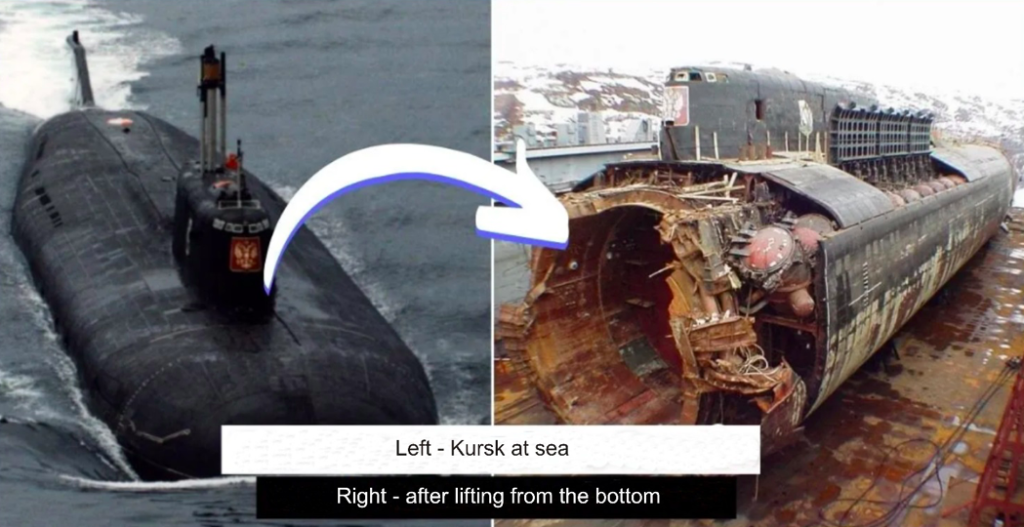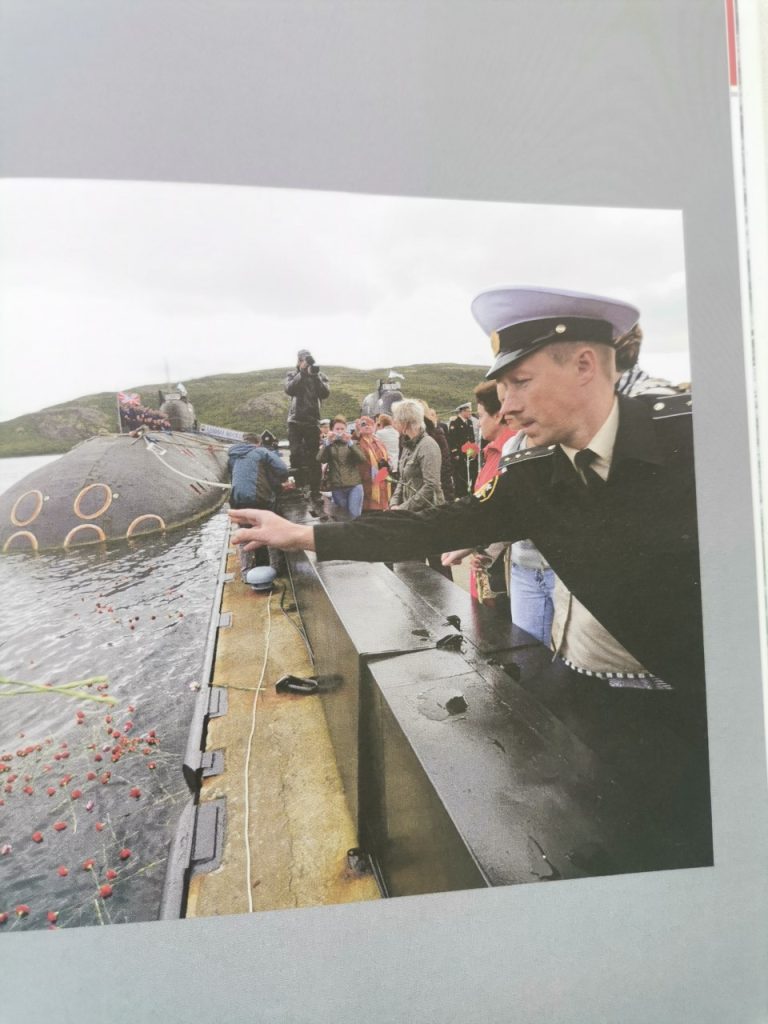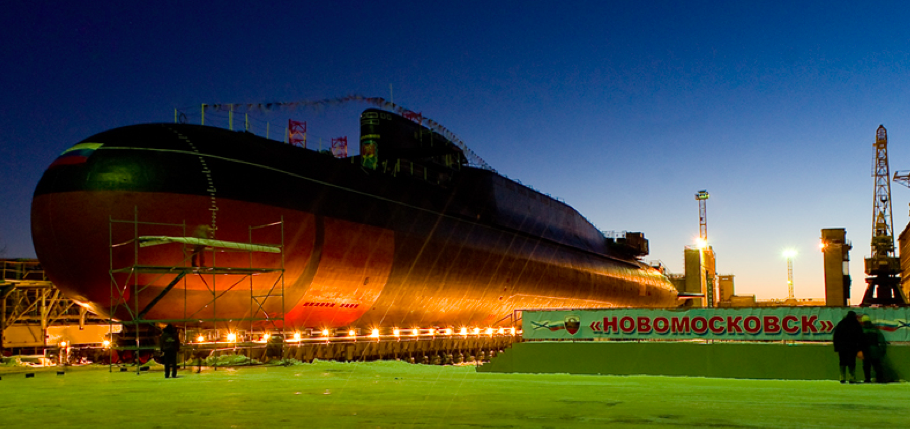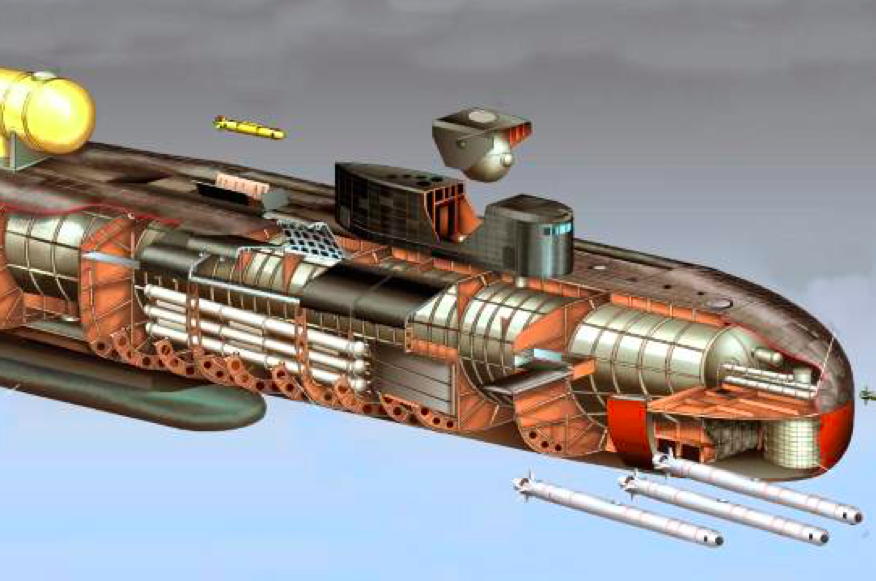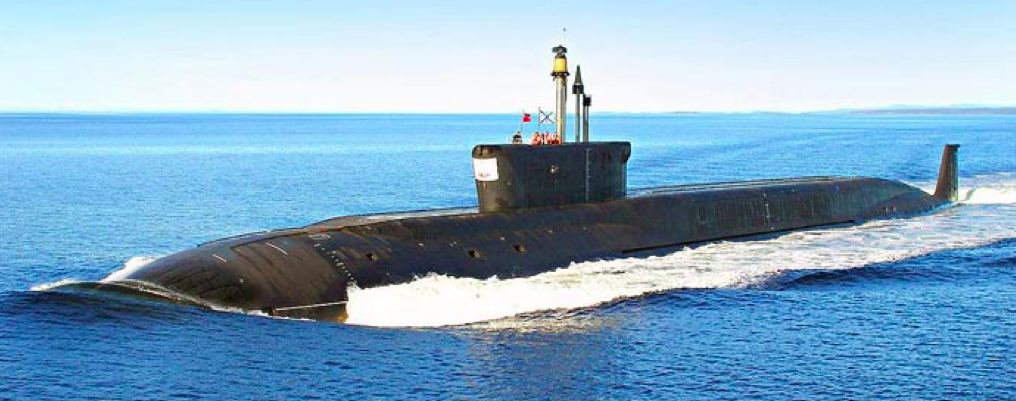The Kursk Submarine Was Sunk by the Russian Navy by Accident
The Navy Captain Igor Kirillovich Kurdin, the Legend of Russian Submarines, Completed the Most Difficult Task
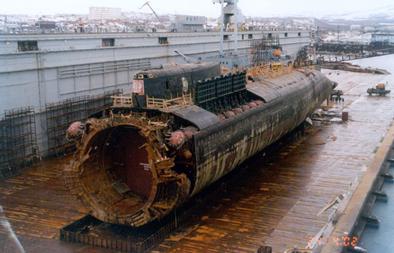
All Global Research articles can be read in 51 languages by activating the Translate Website button below the author’s name.
To receive Global Research’s Daily Newsletter (selected articles), click here.
Click the share button above to email/forward this article to your friends and colleagues. Follow us on Instagram and Twitter and subscribe to our Telegram Channel. Feel free to repost and share widely Global Research articles.
***
When asked what happened to the submarine Kursk on August 12, 2000, when it ended up at the bottom of the Barents Sea with 118 crew members, I will not answer “only” it sank! For twenty years I have worked on the research of this great accident that hit the Russian Navy, and I am obliged to give my expert opinion: I am deeply convinced that it is a “man-made disaster”.
This is the essence of the investigation and the book that was written on the basis of 20 years of work on the expert examination of the sinking of the pride of the Russian Navy by the Navy captain Igor Kirilovich Kurdin, a legend of Russian submarines.
*
Dragan Vujicic (DV): Please explain?
Igor Kirilovich Kurdin (IKK): Things went bad one after another. It was a poorly made torpedo, and the preparation for firing was also bad. The crew had never handled this weapon before and it was the first time they had to launch a “whale” torpedo. During the preparation for firing, there was a combination/mixing of kerosene and hydrogen peroxide, which caused the explosion of one torpedo after another.
*
The elite Russian commander from the town of Polari is the son of submarine commander Kirill Borisovich Kurdin and Nadezhda Yevgenievna Kurdin (Kolesnikov), a participant in polar convoys in the Great Patriotic War. He served on nuclear submarines for 20 years and one day and was commander of three nuclear submarine cruisers K-241 “Murena”, K-84 “Yekaterinburg” and K-407 “Novomoskovsk”. He retired in 1995, and after the sinking of the Kursk in 2000, he agreed to investigate all aspects of the tragedy on behalf of the families of the injured colleagues. He also presented his findings in Belgrade to his colleagues from the Association of Submarines of Serbia, whose guest he was at the end of April.
Kurdin was genuinely shaken as he said: “The investigation into the sinking of the Kursk submarine was my most difficult and emotional professional and life task.” The Kursk submarine was the pride of Russian engineering. This underwater colossus is designated in NATO codification as Oscar 2 (or Project 949A Antej). When designed in the USSR, the submarine was intended to track NATO aircraft carrier groups and eventually destroy them. Antej submarines are designed to have a double hull divided into 10 different spaces. The vessel has a reinforced double hull designed to break through the Arctic ice cap. It is 154 meters long and eleven such buildings were built between 1985 and 1999, eight of which are still in use. Such underwater giants were considered unsinkable, and the tragedy in the Barents Sea in 2000 was the biggest blow to Russian military power. – Of course it was a big blow to the prestige of the Russian Fleet and that is why the investigation has been going on all these years, slowly, thoroughly and checking all possible aspects of the accident – explains Captain Kurdin at the beginning of the interview for newsmagazine “Seal”.
He adds: Everything that preceded the explosion was also investigated, how and when the explosion occurred. Hull and mechanism designers, admirals and lifeguards as well as weapons specialists were interviewed. Everyone told and wrote down what they knew, and I, as the commander of the submarine, just arranged the facts.
*
DV: There are two basic versions?
IKK: One is the one that I believe is a man-made disaster, as I have already explained. Another version is that the Kursk was sunk by an American or English submarine. And these facts were taken into account because they were really nearby in the Barents Sea!
DV: There are also versions that there was a collision with the Americans?
IKK: To say that the American submarine allegedly accidentally hit the Kursk, which activated one torpedo after another. But if that had happened, that submarine would have ended up at the bottom. She couldn’t just lie down on the bottom and crawl on it to hide somewhere. Submarines don’t go on the bottom!
DV: What’s the weirdest version you’ve worked on during a submarine recovery and expertise?
IKK: That it was an accidental torpedo attack. Allegedly, “someone else’s” computer made a mistake, but that only happens in science fiction. According to the sound, you can hear the firing of a torpedo, and no one in the vicinity of Kursk has heard anything like that, and it was not recorded on hydro acoustic devices
DV: It was also said that this powerful submarine was at the minimum depth when the accident happened.
IKK: According to the scenario of that exercise, the Kursk had a zone of influence, and it is true that the accident of the 154-meter ship occurred at a depth of 108 meters, which is really low for this type of submarine. But, it could only be a mitigating circumstance for the crew because at that depth they could have taken it out more easily. However, during that exercise in 2000, when 12 submarines went out to sea, the only rescue ship in the war port was not working and could not even set sail.
DV: So there was no salvation for them?
IKK: According to the navigation regulations of the Russian Navy, when an accident like this happens and in the next eight hours help does not come and let’s say the entire crew dies – no one is to blame but fate. When 23 people wait two days for help at the bottom and there is none, then there is professional responsibility for not providing help to the victims.
DV: Has anyone been held accountable for that?
IKK: Unfortunately no. After a year, 30 admirals and generals were dismissed from service with the explanation: Poor combat readiness. We all knew it was because of Kursk, but it was never emphasized.
DV: So part of the crew was waiting for rescuers?
IKK: It is believed that twenty-three (23) of them could have been helped with the devices from the rescue ship. After the explosion, they barricaded themselves in the compartment (space) of the submarine that was flooded no more than five by five meters and if they kept quiet they could clearly hear the ships going above them. I talked to the people who were the first to enter the sunken submarine and they testify that everything was ready for evacuation. They prepared life suits, buoys and other rescue equipment and waited in the dark for the rescuers. A submariner can really imagine what it’s like to be at the bottom of a wrecked submarine in the dark at a temperature around zero and the percentage of carbon dioxide is rising.
DV: These people still didn’t surrender for two days?
IKK: They could not leave the submarine themselves, but waited for help to come from the rescue ship. They had food and water. They also had special hand-held air purifiers because the central purification system was not working. They regularly removed the air regeneration panels that bind CO2 (carbon dioxide) and release oxygen for about two days from the moment of the accident.
DV: What happened?
IKK: The autopsy findings of the doctor say that 20 of them were killed in section no. 9 suffocated with carbon dioxide and three were burned. A fire broke out in the space where they were grouped as a result of the chemical reaction of this regeneration system and water. In that darkness, water somehow broke into the regenerative cabinet/apparatus, the board came into contact with the water and burst into flames, so that the three female officers could hardly be recognized.
DV: Explain that afterburner?
IKK: This is due to the sensitivity of those devices for air purification in submarines. It was invented by the Germans during the Second World War, and in the boxes of regenerative mass type V-64 there are air purification plates used by submariners when they dive for a long time. The handling of these plates must be extremely careful because they are aggressive on the human mucous membrane, and in contact with water, a violent reaction like an explosion and a fire occurs. It was simply not possible to be careful after two days at the bottom, in the cold and in the dark…
K-407 “Novomoskovsk” submarine
DV: The Kursk tragedy was the biggest blow to the Russian Navy?
IKK: It is true. Previously, Russian submariners were stunned by the decision of their commander-in-chief Boris Yeltsin to give up tactical nuclear warheads on their submarines as well. Let’s say that this class of Antej submarines was designed to deal with the biggest threat to Russia on the seas of the world, which during the Cold War were aircraft carriers primarily from the USA. The Antej submarines were intended to use a bouquet of small tactical nuclear bombs to put to sleep a group of aircraft carriers on the ocean and sink them or a series of explosions would cause a tsunami. However, our president decided that the Americans were not a threat to him, which was, as it turned out later, a big mistake.
DV: Russian Navy – Black Sea Fleet had significant losses in this conflict as well?
IKK: The command ship “Moscow” was lost. What happened there? My personal opinion is that it was a reckless naval operation to leave the cruiser in range of the enemy’s missiles. Moscow was a great ship, it had excellent anti-aircraft protection but not the necessary protection of other ships of its Navy. I am sure that it was a bad calculation by our commanders.
DV: What hit Moscow?
IKK: Two rocket missiles, one of which exploded. The ship suffered such damage that it sank and 20 people died. It was a blow to our prestige in the Black Sea while the Ukrainians shouted: We sunk “Moscow”! Let’s face it, the loss of the landing ship “Saratov” is a blow, and we were also left without some smaller boats.
DV: Have the Americans ever lost their nuclear submarines?
IKK: Yes, they sank the submarines “Thresher” (SSN-593) in 1963 and “Scorpion” (SSN-589) in 1968, and they probably had more such losses. They had the last incident in November 2021, when their submarine “Connecticut” hit a reef while diving in the South China Sea and was then towed to a base in Guam. As they reported themselves, the repair will cost them a whopping 650 million dollars.
DV: It has been in the history of the rivalry between the USA and Russia and the collision of underwater objects.
IKK: Yeah, right. I personally know Captain Igor Lokot, who with his nuclear submarine B-276 Kostroma had a collision with the American rival “Baton Rouge”. That contact is known among us sailors as an “Elbow” strike (after the captain’s last name). I also know the submarine commander Andrei Bulgakov who collided with the American submarine “Grayling”.
DV: Were those collisions accidental or intentional?
IKK: There were no intentions. Submarines are not kamikazes, but in the game of hiding and tracking ships, anything happens, including the situation of colliding in the vast ocean.
DV: Many submariners also testified about strange underwater unknown UFO-like objects?
IKK: There is no submarine commander in the world’s seas who has not witnessed the strangest events under water. I was commander of the submarine on one of the cruises when an unknown force gripped us and tilted the ship pushing us forward and to the bottom. We trimmed the submarine (corrected) but it was in vain. We measured the temperature of the water, the speed and direction of the sea current, but all the devices showed that everything was fine with us, but it wasn’t. Suddenly, that force disappeared and the submarine continued as normal. There are many such stories!
DV: They say that with the advent of hypersonic weapons, the era of aircraft carriers has ended?
IKK: The Americans are the strongest with 12 aircraft carriers and played a major role in the Cold War. Churchill interpreted that power: “The Navy exists and a lot of things don’t actually happen”!Even during the Cold War, we did not build carriers, and we had several smaller cruisers that had airplanes on board. A few years ago we started talking about it again, but although it is true that it is good, for one carrier you have to have three zones of security ships only in anti-submarine defense. Then a special system of basing and maintenance and general overhaul. All in all expensive and unnecessary.
DV: Yet the Chinese and Indians make their own carriers?
IKK: The Chinese are the smartest here. Let’s say they bought the old Soviet aircraft carrier “Varyag” from the Ukrainians as scrap metal to initially make it into a Cultural Center in the port. Then, when they studied it well, they turned that Cultural Center into a modern aircraft carrier, and it’s one of the three they have. Indians buy from us but also from the Americans, combining what they need. Russia has one carrier and our profession says that in the future war they will not be of much use.
DV: What is the standard of Russian naval officers today?
IKK: I will answer as my colleague today’s nuclear submarine commander answered me – I can’t tell you the salary because my wife will hear. Otherwise, during the service, they must get an apartment, a decent income and many other privileges.
DV: Are you one of the most decorated Russian submariners?
IKK: I have 14 medals on my chest, and my favorite is the “Ruby” medal – for raising the sunken AK “KURSK”, which I received at the request of the relatives of the crew who died. Namely, when I finished the expertise on the sinking of the Kursk, I met the families of the victims with her. I also informed general constructor Admiral Mihail Kuznetsov, the commander of the submarine division to which Kursk belonged, Irina Zeljovna, the wife of the submarine’s commander. Nothing is hidden or hushed up.
DV: Have a legendary career?
IKK: Since I finished the Senior Officer Specialist Course “Submarine Commander” in 1983, and then the Higher Naval Academy of the USSR, I have not been on land or in any headquarters in Leningrad for a single day. I participated in 15 long-term (90 days) underwater cruises, five of which in the role of submarine commander. When we asked the famous Russian commander of nuclear submarines, Igor Kurdin, about the new Russian underwater weapon – unmanned underwater vessel “Poseidon”, which has become a “scarecrow” for NATO countries, he first answered “no comment” and then told a moral story:
In short, “Poseidon” is a Russian drone submarine that is capable of blowing up entire cities and creating tsunamis of enormous proportions, and it dates back to the fifties of the last century. The idea of doomsday weapons dates back to when the first Soviet atomic submarine was being constructed. –
When our designers constructed the first Soviet atomic submarine in the fifties, Academician Sakharov, the father of the Russian nuclear program, had the idea to put a 20-meter long super torpedo on the submarine, which would stand on the bow and occupy three sections of the submarine in length. That super torpedo with a thermo-nuclear warhead, according to the project, was supposed to have a range of several tens of kilometers, and the plan of use was for the submarine to reach the shores of America and launch, for example, in the direction of New York.The city would be destroyed, and the tsunami that would be created by the detonation, for example, in front of the city, would sweep away everything in its path. And when the designers, together with Sakharov, came to the Soviet admirals with the idea of such a weapon, they received the answer: We are not at war with civilians. The project was then abandoned – reveals Kurdin.
DV: So even in the most terrible time of the cold war, civilians were taken care of?
IKK: Of course. Now we see how politicians from the West are speculating that the use of tactical nuclear weapons could also be considered in the war in Ukraine. I, as the man who commanded the atomic missile submarines K-241 “Murena”, K-84 “Yekaterinburg” and K-407 “Novomoskovsk”, claim that after the first detonation, a second and then a third would occur and that would be the end of the world.
“Belgorod“ submarine
DV: Back to “Poseidon”?
IKK: I saw that underwater weapon only on “paper” and it is being installed in the “Belgorod” submarine project – the basis of which is the hull of the Kursk (that is, “Antej”). Right now, “Poseidon” are entering the fleet list as part of the “Belgorod” project. It is a doomsday weapon and Russia’s enemies must know that.
DV: You called this vessel (submarine) – killer “Belgorod”. Does it have anything to do with the Serbian capital?
IKK: Maybe there is! (Smiled).
DV: How do you rate today’s Russian Fleet?
IKK: It is heaven and earth as it was in the nineties and in the first decade of this century, when the Americans and the English ruled the world’s seas. Since the nineties, especially during Yeltsin’s time, we neither built nor designed new ships/submarines. The situation has now changed and parity with the Western strongest fleets has been achieved. The most famous Russian project is the atomic missile submarine cruiser “Borei” and another project is “Jasen”. The submarine “Jasen” is multi-purpose and is armed not only with torpedoes but also with missiles and has been used successfully in Syria. The submarine Borei with intercontinental missiles “Bulava” replaces my submarine and soon it will be the basic composition of the Strategic Naval Forces of Russia.
DV: What can Russian submarines do that Western ones can’t?
IKK: We can launch from a dock, from the open sea or when we break through the ice crust in the Arctic or Antarctic. For example, compasses do not work at the poles, and the Russians are the only ones in the world who have target coordinates at the “poles”. We break through the ice, open the lids on the missile silos and shoot up to 12,000 kilometers away.
DV: American submarines can’t do that?
IKK: They can break through the ice but not aim and shoot.
DV: While you were in the service, what was that combat life like?
IKK: Since I finished the Senior Officer Specialist Course “Submarine Commander” in 1983, and then the Higher Naval Academy of the USSR in Leningrad, I have not been on land or in any headquarters for a single day. I participated in 15 long-term (90 days) underwater cruises, five of them in the role of submarine commander. One of my cruising areas was the mid-Atlantic because we had 2,500 kilometer missiles. What can I say – we didn’t know the goals, it was all encrypted and in the computer. Therefore, if there was a need, they would fire projectiles without knowing where they would end up.
DV: A 90-day underwater cruise is a very special experience?
IKK: Of course. There is a preparation before every cruise that is very serious and rigorous. Let’s say it is interesting that Russian sailors are entitled to 50 grams of vodka a day even under water.Admittedly, the principle was that the sailor gives up his portion to his colleague for six days, and then when it’s his turn and his 350 grams, he “has the right” to rest for 24 hours. We managed. Everything is there.
DV: How are submarines used in the Black Sea?
IKK: I can’t comment on that. Just 20 years ago, Russia had one old submarine in the Black Sea, while Turkey had 12 new German ones. Today, our fleet has six underwater objects marked 636.3.which we call Warsaw-women and which have proven to be ideal for conflicts in the regional seas.They are armed with “caliber” missiles and they “work” perfectly. Diesel electric submarines, it turns out, are indispensable for these kinds of conflicts.
DV: You call her a Warsaw-woman?
IKK: Its name remains from the USSR, but of course it is now a completely different combat system.For example, the Americans gave up on diesel electrics and it turned out that they were wrong.The Poles, who had one such vessel, scrapped it as unnecessary, and then when they realized their mistake, they bought submarines from Norway and later complained to us that they had bought “debris” from submarines. The Ukrainians had one that they did not want to service in Russia, but bought the batteries from the French. It turned out that the batteries did not fit, and then they literally gave us that submarine.
DV: There is a lot of talk about some new Russian Shkval torpedo that moves through the water at enormous speeds?
IKK: It is not a completely new weapon, it is more than 20 years old. The bow part of this torpedo has its own generator that runs on a mixture of gas and is actually an underwater rocket. Around herself, while sailing, she produces a shell that allows her super speeds. The squall actually functions as a gun and cannot be guided due to its speed. The advantage is that a surface ship cannot escape it.
DV: They say that the advent of hypersonic weapons ended the era of aircraft carriers?
IKK: The Americans are the strongest with 12 aircraft carriers and played a major role in the Cold War. Churchill interpreted that power: “The Navy exists and a lot of things don’t actually happen”!Even during the Cold War, we did not build carriers, and we had several smaller cruisers that had airplanes on board. A few years ago we started talking about it again, but the truth is that it is good, but for one carrier you have to have three zones of anti-submarine defense only. Then a special system of basing and overhaul. All in all expensive and unnecessary.
DV: What was Russia’s strategy against carriers?
IKK: Let’s say stop them with a bouquet of tactical nuclear bombs and you don’t have to hit the ship – you will sink the whole fleet. With hypersonic, it’s even easier.
DV: The five Pacific countries, led by the USA, created the AUKUS-Pacific NATO with a powerful fleet?
IKK: I have no information about what they are doing. Our surprise check of the Pacific Fleet, which is now being carried out by our submarines and ships, is an opportunity to show the Americans what we mean. It is certain that they would not perform the exercise if we had nothing to show them.
“Borei“ class submarine
*
The best person who knows what happened to the Kursk submarine Navy Captain Igor Kirillovich Kurdin was born in 1953 in the city of Polari, in the family of submarine commander Kirill Borisovich Kurdin and Nadezhda Yevgenievna Kurdin (Kolesnikov), a participant in polar convoys in the Great Patriotic War. In 1975, he graduated with honors from the Submarine Military Academy, majoring in “Submarine missile weapons”. He served on the strategic nuclear submarine missile cruisers of the Northern Fleet. He commanded and sailed for exactly 20 years and one day.
Today, he is the head of the association “St. Petersburg Club of submariners and Navy veterans”. He was awarded the Order “For Service to the Homeland and the Armed Forces of the USSR” and has 14 decorations on his chest. One is the “Rubin” commemorative medal – for raising the sunken APK KURSK – handed over at the request of the relatives of the fallen crew.
*
Note to readers: Please click the share button above. Follow us on Instagram and Twitter and subscribe to our Telegram Channel. Feel free to repost and share widely Global Research articles.
Featured image is licensed under Fair Use; all other images in this article are from the author


